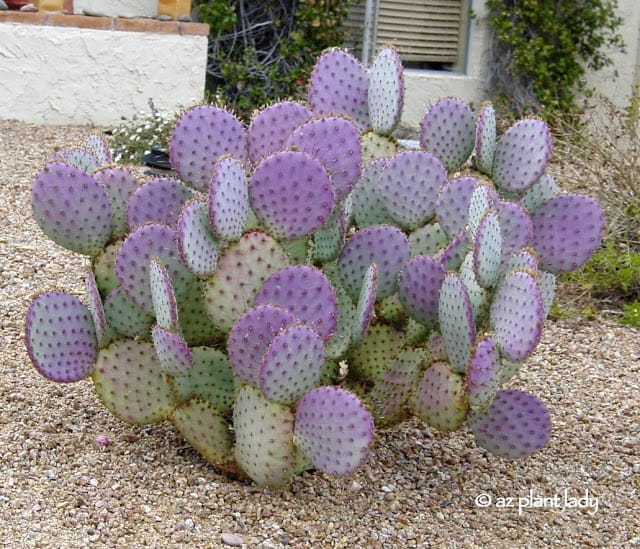
Exploring the Beauty of Prickly Cactus
Do you like prickly cactus? I have a few favorites, one being the Santa-Rita Prickly Pear (Opuntia violaceae var. santa rita). The color contrast of their blue-grey pads and the shades of purple are so striking in the landscape.
The Santa-Rita Prickly Pear: A Stunning Accent Plant
The Santa-Rita prickly pear is a captivating addition to any landscape. Its blue-grey pads and vibrant shades of purple create a visually striking contrast. Not only is this cactus aesthetically pleasing, but both its pads and fruit are edible (though you may want to remove the spines first). Cold temperatures and drought conditions intensify the vivid purple color of this remarkable cactus.
Native Plant Beauty of the Southwest
Native to the Southwestern regions of North America, the Santa-Rita prickly pear can reach impressive dimensions, growing as large as 6 feet by 6 feet. However, if you prefer a smaller size, careful pruning at the junction where the pads connect can maintain a more manageable shape.
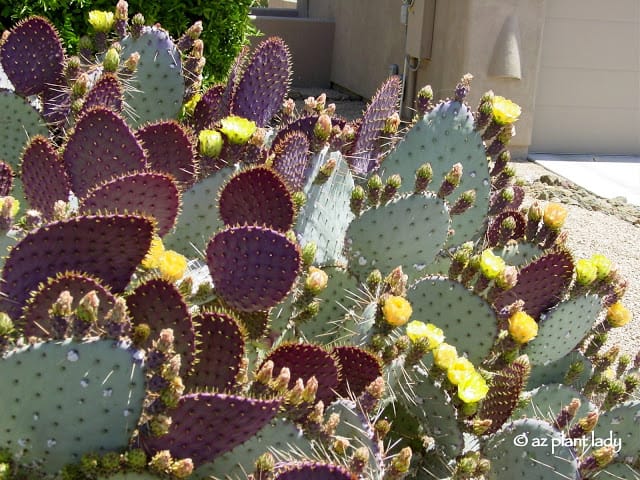
Blossoms and Wildlife with Prickly Cactus
In spring, the Santa-Rita prickly pear graces the landscape with lovely yellow flowers that later give way to red fruit during the summer months. Keep in mind that javelina, rabbits, and pack rats are occasional visitors that might nibble on the pads, while pack rats ingeniously use the pads to build their homes.
Handle with Care: Dealing with Spines and Glochids
Prickly pear pads are covered with clusters of 2″ spines and tiny spines known as glochids. Glochids are especially irritating to the skin and easily detach from the pad, making them challenging to remove. When handling these prickly cacti, use multiple layers of newspaper or a piece of carpet to protect your hands. Avoid gloves, as glochids can render them useless.
Removing Glochids Caused by Prickly Cactus
If you encounter glochids with prickly cactus, there are different methods to remove them, including applying Elmer’s glue, allowing it to dry, and then peeling off the glochids. However, many find greater success using duct tape for a more efficient removal process.
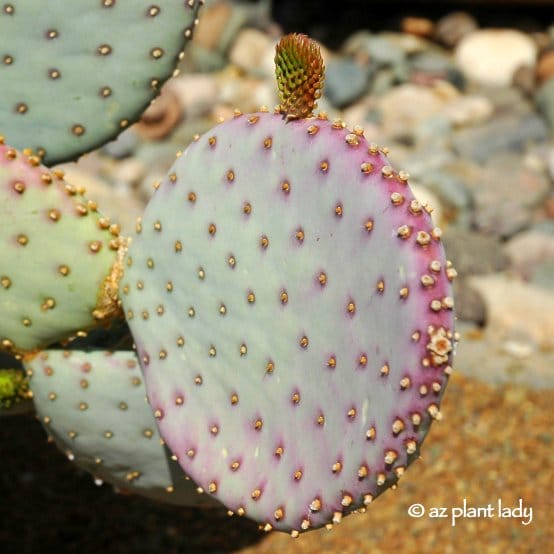
Versatile Uses in Landscaping
Beyond being a landscape accent, the Santa-Rita prickly pear serves as an excellent screen. Surprisingly, it can thrive in containers as well, although it’s essential to keep them away from high-traffic areas. These resilient cacti flourish in full sun or light shade and well-drained soil.
Low-Maintenance Prickly Cactus Beauty
Santa-Rita prickly pears are incredibly low-maintenance plants. When pruning, use tongs or newspaper to handle the trimmed pads. While they are highly drought-tolerant, occasional watering during the hot summer months, especially in the absence of rain, can enhance their appearance. Shriveled pads signal acute drought stress, so a little extra water can work wonders.
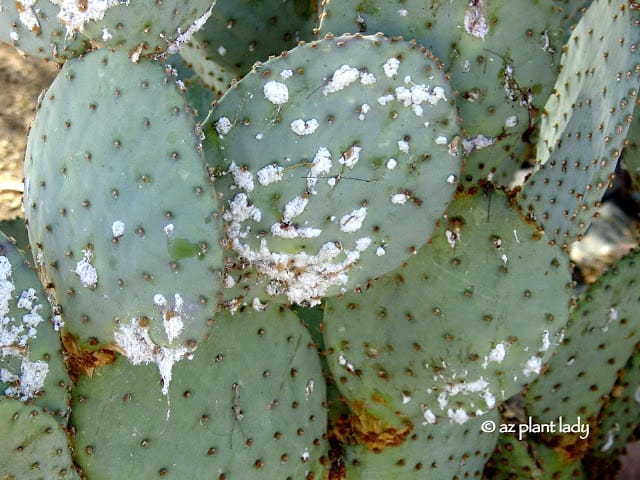
Addressing the Cottony Mystery on Prickly Cactus
Some might mistake white, cotton-like areas on the pads as a fungal infection, but it’s actually caused by a small insect known as cochineal scale. Removing this cottony mass is simple—just spray it off with a strong jet of water from the hose.
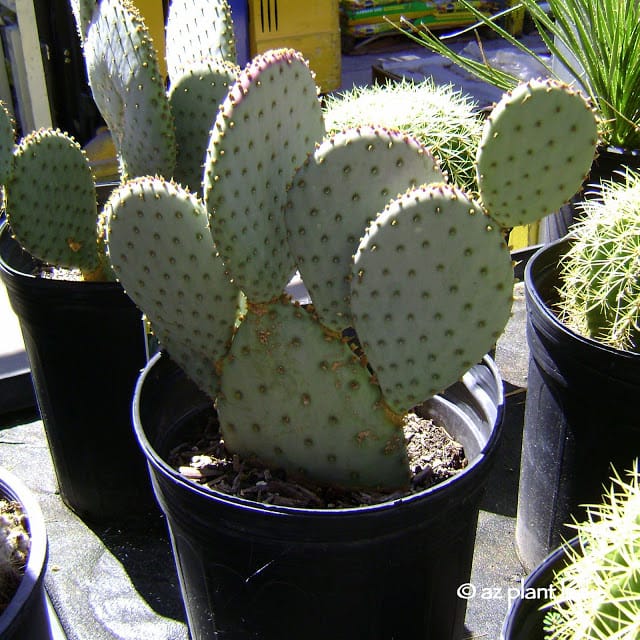
Propagation: A Simple Guide
You can propagate Santa-Rita prickly pear cacti with ease. Simply cut off a pad that is at least 6 inches tall, let it callus upright in a shady, dry spot for about two weeks, and then plant it with the cut end down.
Plant with the cut end down, do not water for the first month because the bottom is susceptible to fungal infections. After the first month, water every 2 – 3 weeks until established.
Timing Matters
Planting in the summer requires shade until the cactus is established (approximately three months). However, it’s often advisable to wait until spring when the soil warms up for planting, especially in regions with cold winters.
Renewed Growth: Pruning and Propagation
For those with established Santa-Rita prickly pear cacti, you can rejuvenate growth by pruning or starting anew. Simply remove the cactus, cut off some pads, and replant them in the same location. Many have embraced this method and have been delighted with the results.
An Interesting Historical Fact
The Aztecs would cultivate prickly pear cactus infected with cochineal scale because the insects secrete a dark red dye with crushed. This was used to dye cloth. The Spanish exported this dye from Mexico back to Europe where it was used to dye royal garments and British military uniforms. The dye was highly valued by the Spanish, next to gold and silver. It takes 70,000 insects to produce 1 pound of dye.
*This is but one of many beautiful prickly pear species available to the home gardener. Do you have a favorite species of prickly pear cactus?








